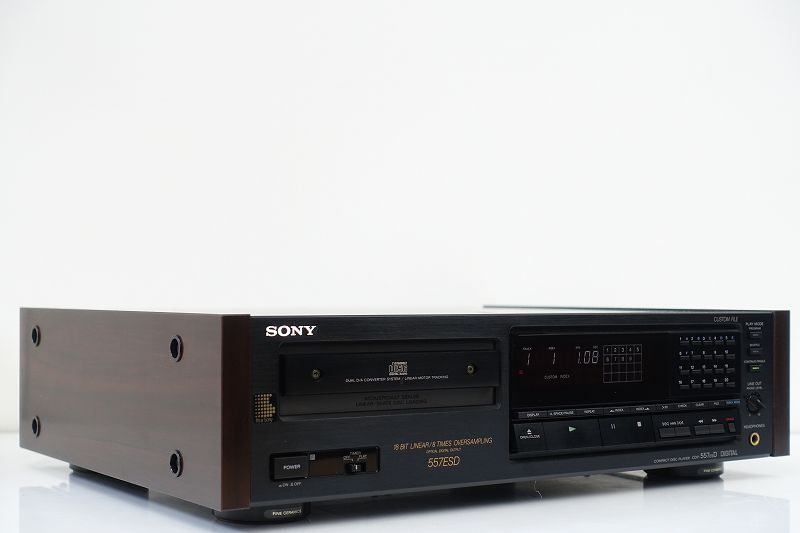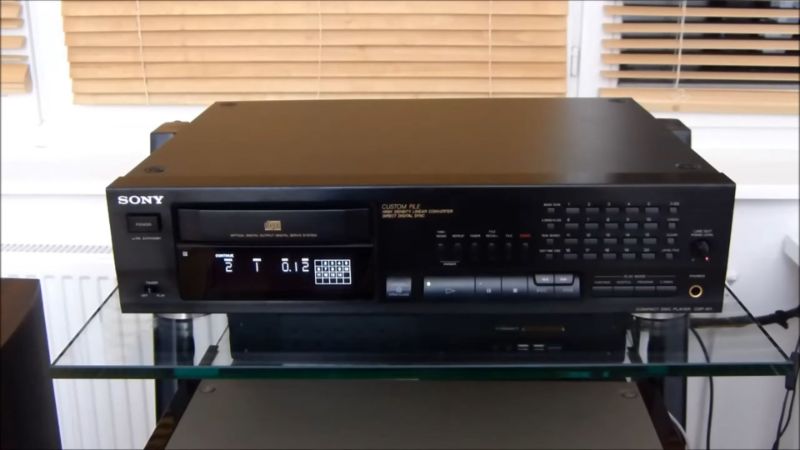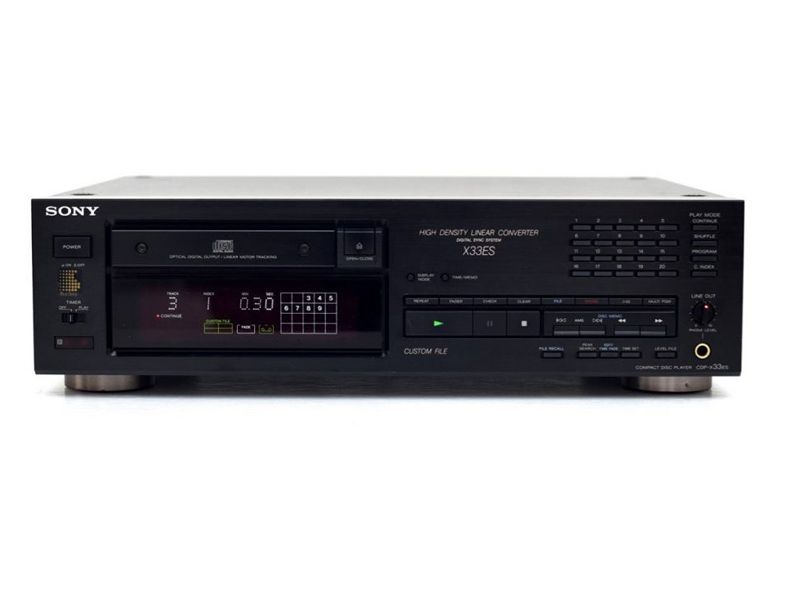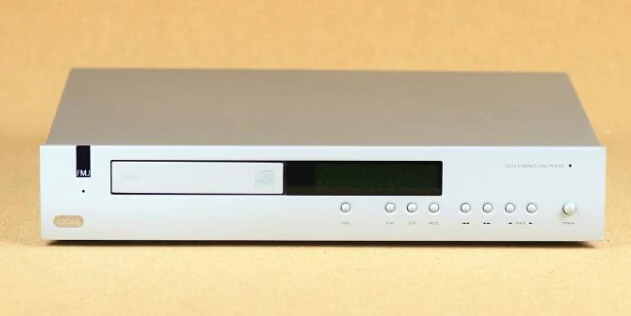Marantz is one of the rare firms that has succeeded in the mainstream while also progressing along the audiophile route. Its ambitions appear to have risen steadily over the last few years, as additional refinements and advancements surface in its Reference range.
The SC-5 preamplifier, for example, is available with a battery power supply (of course rechargeable) to minimize the many sonic risks associated with a mains power supply. The CD-16, an amazing addition to the Marantz stable, was reviewed in October 1995, and some of the qualities that made that player what it is are carried over to more contemporary machines like this CD-17, a sleeker beast that has sacrificed little in the way of sound or functionality.
The review sample was finished in the classic Marantz satin or “champagne” gold, which, when combined with the softly rounded corner pieces, the curved front panel, and the domed round recessed control buttons, gives it a distinct look without resorting to excessive gimmickry. The machine itself has only six buttons, allowing the central fluorescent display to take center stage.
The CD tray on the left is fairly shallow, with a curved front to avoid breaking the panel’s line. Because one of the pushbuttons is the power switch, the front panel has relatively few other functions: the remaining six buttons control the tray open/close, play, stop, pause, and next/previous track skipping, which is all one needs for simple operation. The seeming simplicity is instantly belied by the wealth of capabilities supplied by the remote handset, which has enough buttons to enable practically all of the amenities that may be expected from the CD format, as is typically the case.
Thus, two modes of programming are available: one in which you program in the tracks on a disc that you want to hear, and another in which you select those you don’t want to hear, as well as the seemingly ubiquitous (and for classical users thoroughly repulsive!) random mode, which shuffles the tracks up into arbitrary order.
In case you forget what you want to listen to, there’s a scanning mode that plays the first ten seconds of each track in turn, and there are numerous repeat modes, including an A-B switch for identifying a specific area within a track for repetitive playback. Direct access to a selected track is as simple as pushing the appropriate number on the keypad, and access is rather quick after that. The device also allows you to choose from a variety of time displays, including track and total, elapsed and remaining time.
On the handset, there are two unusual characteristics. One is a display dimmer that provides the subtlety of four brightness levels without the often-seen off setting, with the emphasis obviously on visual rather than aural aesthetics in this case. The handset also includes a pair of volume nudge buttons that, interestingly, regulate the machine’s analogue output rather than the gain of a linked preamp (strangely, the manual says that the volume of the headphones output also follows this adjustment, despite the fact that no headphones output is fitted). The electronic design is clearly inherited from the larger Marantz Reference devices.
Marantz makes a point of avoiding standard amplifier blocks (and in particular operational amplifiers) across the whole Reference range in favor of its own discrete circuits known as Hyper Dynamic Amplifier Modules – hence the HDAM legend on the CD-17’s fascia. Surface-mount components are shielded by a non-magnetic copper can on a circuit board with a second shielding plate on the reverse. The design is said to have an extraordinarily high slew rate, allowing circuits constructed around it to deal successfully with quick transient impulses due to its short mirror-image signal lines.
Another distinguishing Marantz feature is the extensive use of copper plating on steel chassis components to mitigate the impact of eddy currents created in an all-steel enclosure. The use of copper in various external components, such as cabinet screws and feet, draws attention to the presence of copper on the inside. The back panel of any CD player is usually a wasteland, however the CD-17 has more features than others.
The analogue outputs, as well as the IEC (previously SPDIF) digital output, are on gold-plated phono sockets. D-Bus, Marantz’s proprietary cabled remote control system that provides centralized control and interaction between the elements of a correctly configured system of separates, can be attached to the player via two additional connectors.
Measurement of CD players has become little more than a check to see if everything is working properly unless you have access to really high resolution test equipment. Throughout the full audio range, from 20Hz to 20kHz, the frequency response produced no flicker on the meters, as expected, and the level-matching between channels was also outstanding. At 60dB below peak, the accuracy remained high at lower levels as well, with little more than a needle’s breadth variance over the frequency spectrum.
This predicted precision only helps to highlight the inadequacies of all but the most sophisticated test equipment, as it is incapable of explaining why there should be any audible difference across CD players, despite strong evidence to the contrary. On the listening tests, the CD-17 scored exceptionally well for me, with a basic, natural piano track demonstrating several of its excellent aspects at once. Because the piano is the instrument most quickly destroyed by any hint of wow and flutter, it always illustrates one of the primary advantages of any digital system; I recall the impression the absence of such difficulties made on me the first time I heard it.
At the same time, the piano can show tonal flaws and is the most likely instrument to confirm the old allegations of brittleness levelled by digital critics. It’s so pleasant to hear a machine like the CD-17 produce a sound that is as smooth as one could desire for, with enough warmth and depth to fully capture the instrument’s delicate sonorities.
At the same time, the level of detail and transparency is adequate to make the pianist’s breathing and minor movements noticeable, but not intrusive. The transient responsiveness of Marantz’s HDAM circuits is clearly illustrated, providing bite and air to percussion, brass, and anything else requiring dynamics and speed. Stereo imaging and placement are precise and stable, providing a gratifying feeling of depth and acoustic space beyond the loudspeakers.
Marantz’s audiophile products are known for their meticulous attention to detail, which is sometimes overlooked by other manufacturers. Whatever the individual aspects’ relevance, the overall design philosophy’s results speak for themselves, generating a spectrum of components that often go above and beyond. The CD-17 is proud to be a part of this group.







